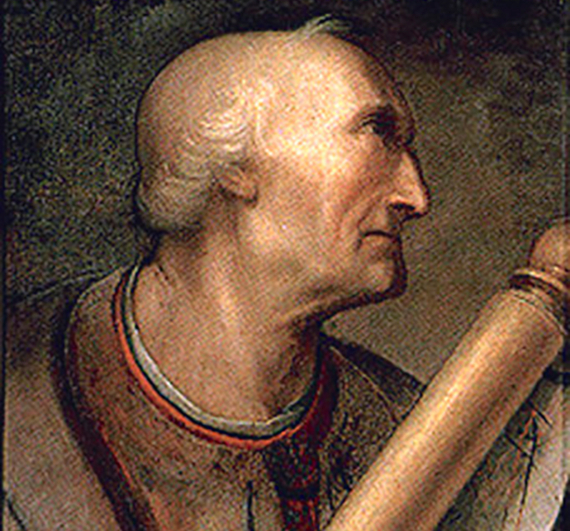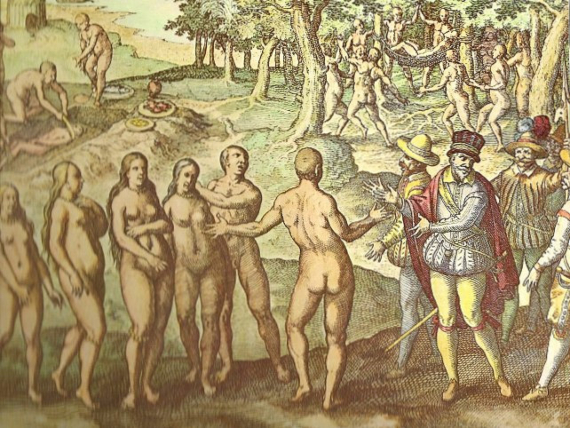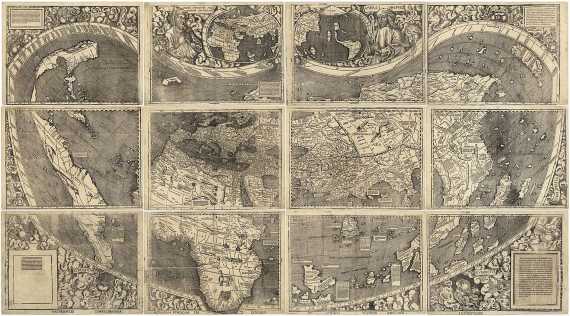There is only one continental landmass on Earth named after a real person, the Americas, which honours the Florentine-Spanish explorer and cosmographer Amerigo Vespucci. It can also be said to be the first continent that came to European knowledge and was named on well-defined dates. The short version of the story is that it was Vespucci who first realised, on 17 August 1501, that present-day Brazil was not part of Asia but a New World, and that the German cartographer Martin Waldseemüller named the new continent of America after him in a map published on 25 April 1507. However, the long version is more complicated, and tells us that the name America is actually the product of some error, a little ignorance and a fair amount of fantasy.

In 1492, the year Christopher Columbus arrived in what would from then on be called the West Indies, the Florentine merchant Amerigo Vespucci (9 March 1454 – 22 February 1512) had settled in Seville on business related to the affairs of his patrons, the Medicis. Although he had no university studies under his belt, he was well educated in geography and astronomy. Increasingly involved in the activities of his superior, Gianotto Berardi, an investor and contractor on Columbus’ expeditions, Vespucci would soon take the leap into exploration himself. In 1497 he would become the first European to set foot on the mainland of the future South America, a year before Columbus, who until then had only visited islands.
Here the first objection arises: the only testimony of that voyage is the Soderini letter, a document allegedly signed by Vespucci in which he gave an account of how that 17 August he made landfall on what he recognised as a new continent. However, experts have widely questioned not only the authorship and authenticity of the account, but even the very existence of the expedition. There seems to be no dispute, however, about two other successive voyages by Vespucci, albeit after Columbus’ arrival on the continent.
Mundus Novus
It was in 1503 that another document signed by Vespucci used the expression Mundus Novus in its title, which would give him primacy in the recognition of the new continent, although the expression “new world” had already been used before; in fact, it is said that Vespucci may have been inspired by Columbus’ reference to “another world.” In the document he writes: “For in those southern parts I have found a continent more densely peopled and abounding in animals than our Europe or Asia or Africa.” He goes on to recount that on 7 August 1501, his flotilla of three Portuguese ships made landfall: “We knew that land to be a continent and not an island both because it stretches forth in the form of a very long and unbending coast, and because it is replete with infinite inhabitants.”

Although Mundus Novus appears as a letter addressed to his former patron, Lorenzo di Pierfrancesco de Medici, it is believed that it is not in fact an original epistle, but rather the work of others as an embellished redrafting of authentic letters by Vespucci. In the document the explorer boasts of how his knowledge of cosmography saved the expedition: “If my companions had not heeded me, who had knowledge of cosmography, there would have been no ship-master, nay not the leader of our expedition himself, who would have known where we were.” Vespucci brags about his use of the quadrant and the astrolabe. “For this reason they subsequently made me the object of great honour; for I showed them that though a man without practical experience, yet through the teaching of the marine chart for navigators I was more skilled than all the ship-masters of the whole world.”
However, experts point out that Vespucci’s astronomical descriptions are confusing, that he made no remarkable or novel observations, and that his techniques were unreliable. He left no maps with his signature. But all this mattered little when his account made such gripping reading: Indians who lived for 150 years and committed incest and cannibalism at will—one had eaten 300 corpses—, voluptuous women “urged by excessive lust” who lay with Christians at the slightest opportunity, and men who used “a certain device of theirs, the biting of certain poisonous animals” to enlarge their genitals “to such huge size that they appear deformed and disgusting.” Not surprisingly, Mundus Novus became a bestseller of its time, translated into several languages.
An error due to ignorance
Vespucci’s works reached the Gymnasium Vosagense, a religious academic institution in Saint-Dié-des-Vosges (France). The group of geographers assembled there, which included Martin Waldseemüller and Matthias Ringmann, published in 1507 a Cosmographiae Introductio, anonymous but probably written by Ringmann, together with a map of the world signed by Waldseemüller and a translation of the Soderini Letter. Both the map and the text assigned the name America to a new continent separate from Asia. “I do not see what right anyone would have to object to calling this part, after Americus who discovered it and who is a man of intelligence, Amerigen, that is, the Land of Americus, or America: since both Europa and Asia got their names from women,” the Introductio said.

Some scholars suggest that it was actually Ringmann and not Waldseemüller who named America, and that the latter merely allowed it, since his later maps do not show this name. But there is a curious detail. Although it may be hard to imagine in these days of Internet, social media and breaking news, in the 16th century information circulated extremely slowly. In 1507, it had not yet reached Ringmann’s ears that a certain Columbus, who had died the previous year, had arrived in the New World before Vespucci.
After Ringmann’s death, Waldseemüller stopped using the name America on his maps, noting simply that the land had been discovered by “Christopher Columbus of Genoa.” But it was too late. The work of 1507 was so influential that the name America was copied by other cartographers in successive works. In 1538, the celebrated geographer Gerardus Mercator printed it in his Orbis Imago, his first world map. And the rest is history. For his part, Vespucci died in Seville in 1512 without knowing that his name would come to designate an entire continent, a privilege never achieved by any other human being.
Comments on this publication